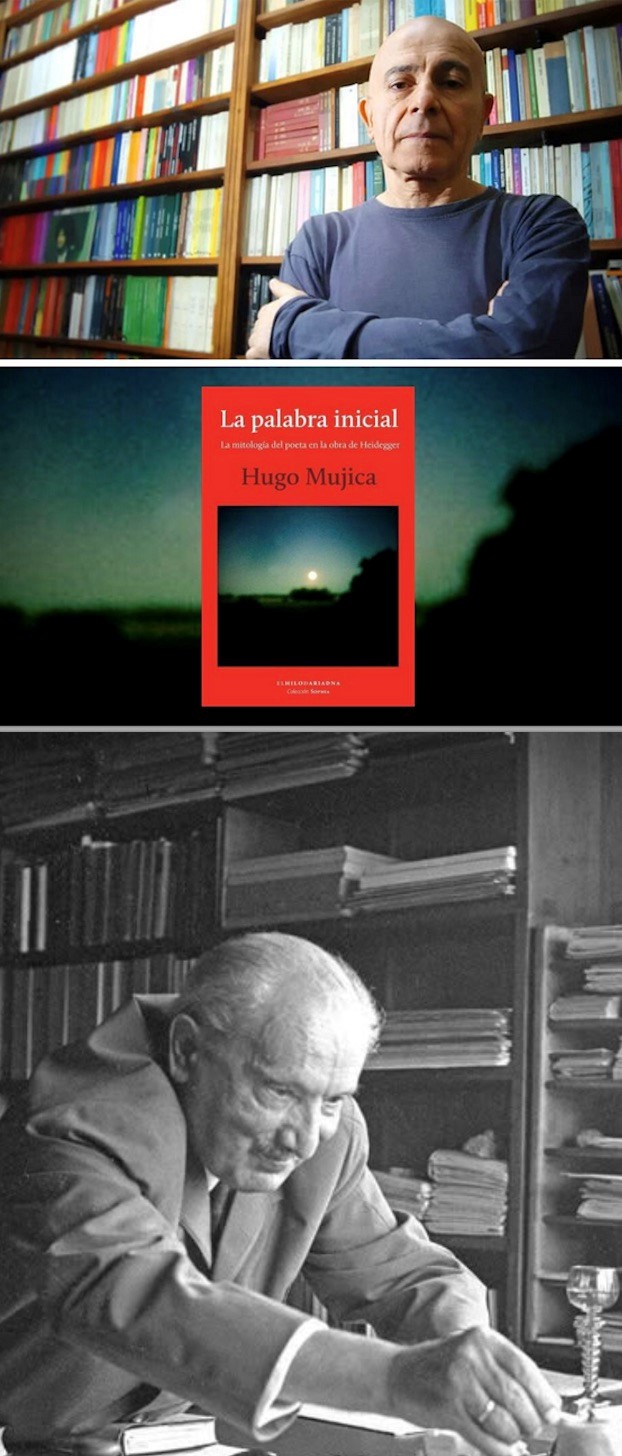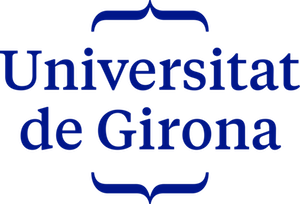
Hugo Mujica: The initial word. Inhabiting Poetically - Mystery and Revelation (I)
The unveiling presupposes the veil and the reality, māyā is the veil that the apokalypsis unveils. Māyā is the veiled goddess who becomes visible through the same veil, which, by covering her, manifests her. “Nature (physis) likes to hide itself,” Heraclitus will say, and Heidegger, two and a half millennia later, will make a whole commentary on that passage; ‘the power (śakti) of God hides itself in its very qualities,’ will say an Upaniṣad; ‘Yahweh, has said that he wants to dwell in darkness,’ will affirm the Bible. Maya not only conceals reality, but by veiling it makes it visible; the world is precisely world because in it Being is not fully manifested.
- Raimon Panikkar, Maya e Apocalisse, Abate, Roma, 1966; Misterio y revelación, Marova, Madrid, 1971; Introduction (Vārāṇasī, Advent, 1965).
We take this expression of Panikkar as a framework for the studium that we propose to carry out in three courses, with three Spanish-speaking authors: Hugo Mujica (Buenos Aires, 1942-), Eugenio Trías (Barcelona, 1942-2013) and Salvador Pániker (Barcelona, 1927-20).
Hugo Mujica (Buenos Aires 1942), studied Fine Arts, Philosophy, Anthropology and Theology; studies that we see in an oeuvre that encompasses philosophy, anthropology, narrative, mysticism, poetry and aesthetic inquiry.
For me philosophy, and everything, are nothing more than narratives in which we tell ourselves, we tell ourselves in order to know ourselves and we know ourselves by telling ourselves… Philosophy and poetry are two moments, two dimensions of the same thing, of the only thing, that which we do not get to tell. I would say that poetry is what penetrates, penetrates reality and, from that penetration, that wound, flows the thinking, more linear, more distant to the source, or, poetry has to do with the origin, philosophy with the beginning. Poetry is the spring, philosophy the drift.
A work in which beats an intense biography: working as a factory worker at the age of thirteen; leaving at nineteen in the United States with his hands in his pocket and without knowing English; spending the sixties in Greenwich Village as a visual artist; collaborating with Timothy Leary and Ralph Metzner in research on LSD and creation; participating in the anti-war and racial and sexual equality rights movements; meeting Allen Ginsberg and sharing his guru, Swami Satchitananda, with whom he lived as a disciple for a couple of years; going to the Allen Ginsberg festival and sharing his guru, Swami Satchitananda, with whom he lived as a disciple for a couple of years; to treat Allen Ginsberg and share his guru, Swami Satchitananda, with whom he lived as a disciple for a couple of years; to attend the Woodstock festival, “my goodbye to the world”, he said; to live seven years of silence, as a monk of the Trappist order and where he met Thomas Merton; to begin, from this silent traffic, to write; to become a Catholic priest and become the pastor of a parish; to leave his habits to devote himself to writing, poetry, contemplation…. Today, he is one of the media references and one of the most recognized figures of thought in his country.
Of his work, with some narrative and an extensive poetic work, as an essayist we highlight: Origen y destino. De la memoria del poeta presocrático a la esperanza del poeta en la obra de Heidegger (1987), Kyrie Eleison. Una meditación cristiana (1991), Kénosis. Sabiduría y compasión en los Evangelios (1992), La palabra inicial. La mitología del poeta en la obra de Heidegger (1995), Poéticas del vacío. Orfeo, Juan de la Cruz, Paul Celan, la utopía, el sueño y la poesía (2002), Lo naciente. Pensando el acto creador (2007), La pasión según Georg Trakl. Poesía y expiación (2009), El saber del no saberse. Desierto, Cábala, el no-ser y la creación (2014), Dioniso. Eros creador y mística pagana (2016), La carne y el mármol. Francis Bacon y el arte griego (2018), Señas hacia lo abierto. Los estados de ánimo en la obra de Heidegger (2023).
I do not construct my thoughts, I am them, I am born in them, they are the emergent of my life and, at the same time, it is where my life is said and in saying it, it knows itself, it listens to itself thinking, that is, it looks at itself in those images in which it is conceptualized and in which it expresses itself and transcends in communication. So there is no “construction” but event; there is creation.
For the work of this course we have chosen La palabra inicial. La mitología del poeta en la obra de Heidegger (1995), a book of great diffusion, with several editions and in different publishers, on which Hugo Mujica has been working until the last one in 2019. It is not a book about Heidegger’s work, but rather a narrative path from Heidegger’s work to his archetypal figure: the poet. It is in poetry that language still dispenses meaning; it is by giving the poet the floor that the initial word can be heard, the word that inaugurates poetic inhabitation. Hölderlin, Rilke, Goethe or René Char, among other essential poets, are listened to with Heidegger’s ear. But not only poets, Mujica also penetrates and makes explicit a voice mentioned by Heidegger from his first writing to the end: that of the master Eckhart, that of essential mysticism.
A text that is addressed both to the neophyte, since it can be read from the inside, that is, without the need for a knowledge of Heidegger’s work, and, due to the originality and richness of its approach, to those who already know the work of the German philosopher.
If we were to divide the book into two parts, we would have to put Umbral and Salto under the slogan of “deconstruction”. Deconstruction that is an undoing of what covers and covers the meaning of Being, the accumulated and sedimented understandings and translations that mask and suffocate the original meaning of Being. A deconstruction that is a de-covering, a removing of what covers, an opening of the possibility for a new unfolding of the meaning of Being to happen, to take place. Dismantling of “metaphysics”, of rational, objectifying thought, so that in the second diptych, Abyss and Celebration, we already find “open the clearing” where Being can speak, the ontological space where the poet can give it and be its voice.
- Hugo Mujica, La palabra inicial. La mitología del poeta en la obra de Heidegger, Trotta, Madrid, 1996; latest expanded edition that includes all the revisions, in El Hilo de Ariadna, Buenos Aires, 2019, p. 18.
The proposed complementary reading is The Colossus of Maroussi (1941) by Henry Miller who, like many others since Goethe, will make his journey to the origins. As a guest of Lawrence Durrell, he will set foot in Greece in July 1939, and with his poet friends, Georgios Seferiadis (Yorgos Seferis) and George Katsimbalis (the Colossus of Maroussi), who will introduce him to the work of Cavafis, he will begin a pilgrimage, until December 1939, through a land where one can still live the game between mortals and gods, the blind and the undead.lo y la tierra: Corfú, Atenas, Delfos, Epidauro, Eleusis, Micenas, Creta…
I had never seen a sky like that. It was magnificent. I felt completely separated from Europe. I had entered as a free man into a new realm. Greece is still a sacred precinct, and I am convinced that it will remain so until the end of time. […] To move from place to place in Greece is to become aware of the fatal and moving drama of the race, in its ascent from paradise to paradise. Each stop is a milestone on the path marked by the gods. There are stations for rest, for prayer, for meditation, for action, for sacrifice, for transfiguration. Nowhere along the way is the inscription FINIS not found.
- Henry Miller, El colós de Marussi, traduction by Jordi Arbonès, Edhasa [Clàssics Moderns], Barcelona, 1987, p. 20, 61.
Here you will find the program of the seminar, in which we put the text, object of our studium, in dialogue with the poets Heidegger listens to, in translations of Catalan poets, with poetry of these and others.
We can find on the web several interviews, conferences, dialogues, reports… for example:
- «Hugo Mujica, Señas hacia lo abierto», interview, Cristina Mucci, Los 7 locos, TV Argentina (2021)
- «Hugo Mujica, La poètica de la creación», lecture, FAAD workshop, (September 2019)
- «Hugo Mujica, El don de lo que no està», report, dir. Julian Ciro, Aurora Boreal, Universidad del Cine (2018)

